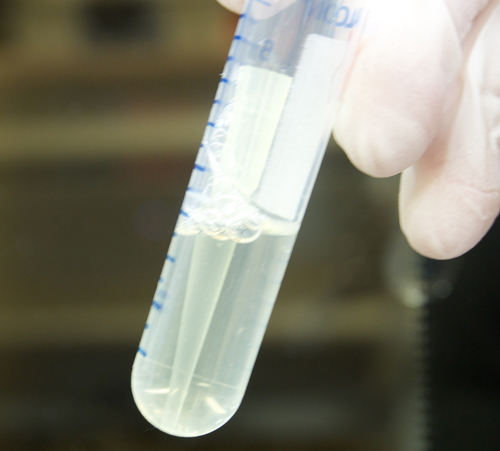Disclaimer Regarding Sample Carry-Over
The Qiagen Bio-Robots that we use to perform bacterial DNA mini-preps are designed for rapid isolation of the DNA and the usage of a minimum amount of consumables. For this reason, they are equipped with stainless steel probes that are used for reagent dispensing AND sample transfer. Although there are multiple wash steps using both water and chemical washes, some very minor carry-over of material from one prep to another WILL occur. This has been checked and we have taken every step to minimise this carry-over. However, we cannot eliminate it.
This carry-over will not affect any standard diagnostic or analysis step performed on the mini-prep DNA (e.g. restriction digests, sequencing, etc). However, if you subsequently re-transform the mini-prep DNA and pick a colony, there is the small chance that the colony chosen might represent mini-prep DNA that was carried-over from a previous sample. As with any good laboratory practice, we also encourage customers to check their mini-prep plasmid prior to generating a larger preparation of DNA -- even if they are not using a mini-prep protocol that introduces some carry-over.
As the carry-over discussed above is inherent to the robots used in our service, MRC PPU DNA Sequencing and Services is not responsible if customers neglect to check and confirm the identity of plasmids used for follow-on studies.
Below we have provided additional information regarding ways to overcome carry-over issues:
Replica-plate before mini-prepping
When picking a colony from a transformation, streak it onto a new agar plate using a reference grid and then use the same colony picker to start the mini-prep. In this way, you can go back to the replica streak once you know that the mini-prep is what you want.
Replica-plate after re-transformation
If you decide not to replica-plate at the start, you can do this when you re-transform the mini-prep DNA for a larger prep (e.g. maxiprep). In this case, simply transform bacteria, plate these out and pick a number of colonies (e.g. six). Streak these onto a new agar plate and use the same colony picker to start a mini-prep. Once you have performed the mini-prep and know which colony is right, you can go back to the replica-plate for setting up the maxi-prep.
Which Method Is Best?
Of the methods outlined above, there is no 'best' one. Rather, we encourage customers to consider their cloning strategy, number of colonies needed for initial screening


